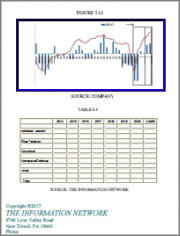
|
시장보고서
상품코드
1698347
유기 태양전지 시장 : 예측(2025-2030년)Organic Solar Cells Market - Forecasts from 2025 to 2030 |
||||||
유기 태양전지(OSC) 시장은 2025년 1억 8,958만 9,000달러에서 11.94%의 CAGR로 성장하여 2030년에는 3억 3,316만 9,000달러에 달할 것으로 예상됩니다.
유기 태양전지는 유기 고분자를 포함하는 3세대 태양전지로 분류됩니다. 유기 태양전지는 신흥 태양광발전(PV) 기술 중 하나이며, 전하 전달 및 광흡수를 위해 전자기기에 사용되고 있습니다. 설계 및 적응성 측면에서 유기 태양전지는 기존 태양전지를 능가하고 있으며, 산업 확장에 박차를 가할 것으로 예상됩니다. 유기 태양전지 시장에서는 기술 발전과 제품 혁신이 가장 중요합니다. 지속적인 연구개발을 통해 효율 향상, 안정성 및 내구성 향상, 생산비용 절감을 촉진하여 유기태양전지의 경쟁력과 가격 경쟁력을 높이고 있습니다.
시장 동향:
- 청정에너지에 대한 수요 증가와 정부의 지원 정책 : 21세기의 에너지 수요 증가에 대응하기 위해 친환경적이고 재생 가능한 에너지원으로의 전환이 두드러지고 있으며, 그 중에서도 태양에너지는 가장 신뢰할 수 있는 대안 중 하나로 부상하고 있습니다. 급속한 인구 증가, 산업화, 기술 발전으로 인해 상당한 에너지 공급이 필요하게 되었습니다. 국제에너지기구(IEA)에 따르면, 태양광발전(PV)은 재생에너지의 60%를 차지합니다. 특히 천연가스와 석탄 가격이 급등하면서 대부분의 국가에서 발전량을 확대하기 위해 실용 규모의 태양광발전이 가장 비용 효율적인 선택이 되고 있습니다. 중국, 유럽연합(EU), 인도 등의 정책적 조치로 인해 상업용 및 주거용 태양광발전 프로젝트 개발이 가속화되고 있습니다.
- 청정에너지 솔루션으로의 전환 : 청정에너지원을 찾는 세계의 움직임은 태양에너지 분야의 기술 혁신의 큰 원동력이 되고 있습니다. 유기 태양전지는 기존의 실리콘 태양전지를 대체할 수 있는 친환경 태양전지로 주목받고 있습니다.
- 아시아태평양의 시장 성장 : 아시아태평양의 각국 정부는 저에너지 인프라를 추진하여 기후변화에 대응하기 위한 다양한 정책과 프로그램을 시행하고 있으며, 이는 유기태양전지의 수요를 증가시키고 있습니다. 예를 들어, 인도의 PM Surya Ghar Muft Bijli Yojana는 2kW까지의 옥상 태양광발전 시스템에 60%, 2-3kW 시스템에 40%의 보조금을 지급하고 있습니다.
본 보고서에서 다루는 주요 기업으로는 Mitsubishi Chemical Holdings Corporation, Armor Group, NanoFlex Power Corporation 등이 있습니다:
본 보고서의 주요 장점
- 통찰력 있는 분석 : 고객 부문, 정부 정책 및 사회경제적 요인, 소비자 선호도, 산업별, 기타 하위 부문에 초점을 맞추고 주요 지역뿐만 아니라 신흥 지역까지 포괄하는 상세한 시장 인사이트를 얻을 수 있습니다.
- 경쟁 상황 : 세계 주요 기업들이 채택하고 있는 전략적 전략을 이해하고, 적절한 전략을 통한 시장 침투 가능성을 파악할 수 있습니다.
- 시장 동향과 촉진요인 : 역동적인 요인과 매우 중요한 시장 동향, 그리고 이들이 향후 시장 개척을 어떻게 형성할 것인지에 대해 알아봅니다.
- 실행 가능한 제안 : 인사이트를 전략적 의사결정에 활용하고, 역동적인 환경 속에서 새로운 비즈니스 스트림과 수익을 발굴합니다.
- 다양한 사용자에 대응 : 스타트업, 연구기관, 컨설턴트, 중소기업, 대기업에 유익하고 비용 효율적입니다.
어떤 용도로 사용되는가?
산업 및 시장 인사이트, 사업 기회 평가, 제품 수요 예측, 시장 진입 전략, 지리적 확장, 설비 투자 결정, 규제 프레임워크 및 영향, 신제품 개발, 경쟁의 영향
조사 범위
- 2022년부터 2024년까지의 과거 데이터 & 2025년부터 2030년까지의 예측 데이터
- 성장 기회, 도전과제, 공급망 전망, 규제 프레임워크 및 동향 분석
- 경쟁사 포지셔닝, 전략 및 시장 점유율 분석
- 매출 성장 및 예측 분석(국가 및 지역을 포함한 부문 및 지역)
- 기업 프로파일링(특히 재무 정보 및 주요 개발).
유기 태양전지 시장은 다음과 같은 부문으로 분석됩니다:
유형별
- 싱글 레이어
- 바이레이어
- 벌크 이종접합 유기 전지
용도별
- 재래식 태양광 애플리케이션
- 모바일 애플리케이션
- 군사 기반 애플리케이션
- 건물 일체형 태양광발전(BIPV)
지역별
- 아메리카
- 미국
- 기타
- 유럽, 중동 및 아프리카
- 독일
- 프랑스
- 기타
- 아시아태평양
- 중국
- 일본
- 기타
목차
제1장 주요 요약
제2장 시장 현황
- 시장 개요
- 시장 정의
- 조사 범위
- 시장 세분화
제3장 비즈니스 상황
- 시장 성장 촉진요인
- 시장 성장 억제요인
- 시장 기회
- Porter's Five Forces 분석
- 업계 밸류체인 분석
- 정책과 규제
- 전략적 추천사항
제4장 기술 전망
제5장 유기 태양전지 시장 : 유형별
- 소개
- 단층
- 이중층
- 벌크 이종접합 유기 전지
제6장 유기 태양전지 시장 : 용도별
- 소개
- 기존 태양광발전 애플리케이션
- 모바일 애플리케이션
- 군사 기반 애플리케이션
- 건물 일체형 태양광발전(BIPV)
제7장 유기 태양전지 시장 : 지역별
- 소개
- 아메리카
- 미국
- 기타
- 유럽·중동 및 아프리카
- 독일
- 프랑스
- 기타
- 아시아태평양
- 중국
- 일본
- 기타
제8장 경쟁 환경과 분석
- 주요 기업과 전략 분석
- 시장 점유율 분석
- 합병, 인수, 합의 및 협업
- 경쟁 대시보드
제9장 기업 개요
- Mitsubishi Chemical Holdings Corporation
- Armor Group
- NanoFlex Power Corporation
- GenesInk
- Heliatek
- Epishine
- Solivus
- Moresco Corporation
- Solarmar Energy Inc.
제10장 부록
- 통화
- 가정
- 기준 연도와 예측 연도 타임라인
- 이해관계자에 대한 주요 이점
- 조사 방법
- 약어
The organic solar cells market is estimated to attain US$333.169 million by 2030, growing at a CAGR of 11.94% from US$189.589 million in 2025.
Organic solar cells (OSCs) are categorized as third-generation solar cells containing organic polymers. OSCs are one of the emerging photovoltaic (PV) technologies and are used in electronics for charge transmission and light absorption. In terms of design and adaptability, organic solar cells outperform conventional solar cells, which is projected to spur industry expansion. Technological advancement and product innovations are paramount for the organic solar cell market. Consistent R&D promotes greater efficiency, better stability and durability, and lower cost of production, increasing the competitiveness and affordability of organic solar cells.
Market Trends:
- Growing demand for cleaner energy and supportive government policies: To address the rising energy demands of the 21st century, there is a significant shift toward green and renewable energy sources, with solar energy emerging as one of the most reliable options. Rapid population growth, industrialization, and technological advancements are driving the need for substantial energy supplies. According to the International Energy Agency (IEA), solar photovoltaics (PV) account for 60% of renewable energy. Utility-scale solar PV is the most cost-effective option for expanding power generation in most countries, especially amid rising natural gas and coal prices. Policy measures in regions like China, the European Union, and India are accelerating the deployment of both commercial and residential solar PV projects.
- Global shift toward clean energy solutions: The worldwide push for cleaner energy sources is a major driver of innovation in the solar energy sector. Organic solar cells are gaining attention as a potentially more environmentally friendly alternative to traditional silicon-based solar cells.
- Asia-Pacific's market growth: Governments across the Asia-Pacific region are implementing various policies and programs to combat climate change by promoting low-energy infrastructure, which is boosting the demand for organic solar cells. For example, India's PM Surya Ghar Muft Bijli Yojana provides subsidies of 60% for rooftop solar systems up to 2 kW and 40% for systems between 2-3 kW, with a maximum benefit cap of 3 kW, encouraging households to adopt solar energy solutions.
Some of the major players covered in this report include Mitsubishi Chemical Holdings Corporation, Armor Group, and NanoFlex Power Corporation., among others:
Key Benefits of this Report:
- Insightful Analysis: Gain detailed market insights covering major as well as emerging geographical regions, focusing on customer segments, government policies and socio-economic factors, consumer preferences, industry verticals, and other sub-segments.
- Competitive Landscape: Understand the strategic maneuvers employed by key players globally to understand possible market penetration with the correct strategy.
- Market Drivers & Future Trends: Explore the dynamic factors and pivotal market trends and how they will shape future market developments.
- Actionable Recommendations: Utilize the insights to exercise strategic decisions to uncover new business streams and revenues in a dynamic environment.
- Caters to a Wide Audience: Beneficial and cost-effective for startups, research institutions, consultants, SMEs, and large enterprises.
What do businesses use our reports for?
Industry and Market Insights, Opportunity Assessment, Product Demand Forecasting, Market Entry Strategy, Geographical Expansion, Capital Investment Decisions, Regulatory Framework & Implications, New Product Development, Competitive Intelligence
Report Coverage:
- Historical data from 2022 to 2024 & forecast data from 2025 to 2030
- Growth Opportunities, Challenges, Supply Chain Outlook, Regulatory Framework, and Trend Analysis
- Competitive Positioning, Strategies, and Market Share Analysis
- Revenue Growth and Forecast Assessment of segments and regions including countries
- Company Profiling (Strategies, Products, Financial Information, and Key Developments among others)
Organic Solar Cells Market is analyzed into the following segments:
By Type
- Single Layer
- Bilayer
- Bulk Heterojunction Organic Cells
By Application
- Conventional Solar Applications
- Mobile Applications
- Military-Based Applications
- Building Integrated Photovoltaics (BIPV)
By Region
- Americas
- United States
- Others
- Europe, Middle East & Africa
- Germany
- France
- Others
- Asia Pacific
- China
- Japan
- Others
TABLE OF CONTENTS
1. EXECUTIVE SUMMARY
2. MARKET SNAPSHOT
- 2.1. Market Overview
- 2.2. Market Definition
- 2.3. Scope of the Study
- 2.4. Market Segmentation
3. BUSINESS LANDSCAPE
- 3.1. Market Drivers
- 3.2. Market Restraints
- 3.3. Market Opportunities
- 3.4. Porter's Five Forces Analysis
- 3.5. Industry Value Chain Analysis
- 3.6. Policies and Regulations
- 3.7. Strategic Recommendations
4. TECHNOLOGICAL OUTLOOK
5. ORGANIC SOLAR CELLS MARKET BY TYPE
- 5.1. Introduction
- 5.2. Single Layer
- 5.3. Bilayer
- 5.4. Bulk Heterojunction Organic Cells
6. ORGANIC SOLAR CELLS MARKET BY APPLICATION
- 6.1. Introduction
- 6.2. Conventional Solar Applications
- 6.3. Mobile Applications
- 6.4. Military-Based Applications
- 6.5. Building Integrated Photovoltaics (BIPV)
7. ORGANIC SOLAR CELLS MARKET BY GEOGRAPHY
- 7.1. Introduction
- 7.2. Americas
- 7.2.1. United States
- 7.2.2. Others
- 7.3. Europe, Middle East & Africa
- 7.3.1. Germany
- 7.3.2. France
- 7.3.3. Others
- 7.4. Asia Pacific
- 7.4.1. China
- 7.4.2. Japan
- 7.4.3. Others
8. COMPETITIVE ENVIRONMENT AND ANALYSIS
- 8.1. Major Players and Strategy Analysis
- 8.2. Market Share Analysis
- 8.3. Mergers, Acquisitions, Agreements, and Collaborations
- 8.4. Competitive Dashboard
9. COMPANY PROFILES
- 9.1. Mitsubishi Chemical Holdings Corporation
- 9.2. Armor Group
- 9.3. NanoFlex Power Corporation
- 9.4. GenesInk
- 9.5. Heliatek
- 9.6. Epishine
- 9.7. Solivus
- 9.8. Moresco Corporation
- 9.9. Solarmar Energy Inc.
10. APPENDIX
- 10.1. Currency
- 10.2. Assumptions
- 10.3. Base and Forecast Years Timeline
- 10.4. Key benefits for the stakeholders
- 10.5. Research Methodology
- 10.6. Abbreviations



















